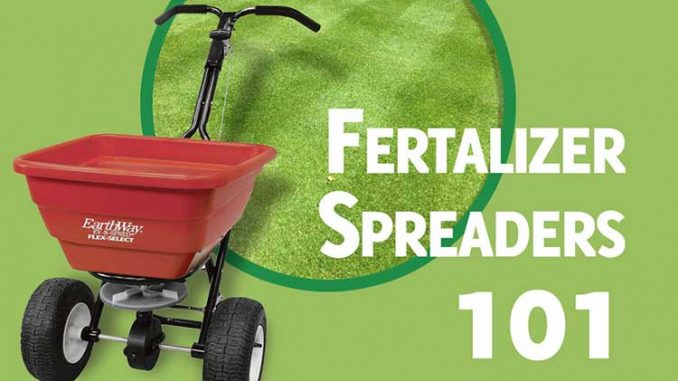
Fertilizer Spreaders are lawn care tools designed to spread fertilizer in your home garden. Typically, spreaders started out as large. They are tools used for uniform distribution of fertilizer over your lawn or garden. Fertilizer spreaders are available in many different forms and types.
They are widely used by lawn owners who want to keep the garden looking good and healthy
Some help prevent the formation of clumps during the actual application. Keep in mind that the way you spread the fertilizer will determine the rate of growth and proper/even lawn growth
Fun Facts About the Fertilizer Spreader
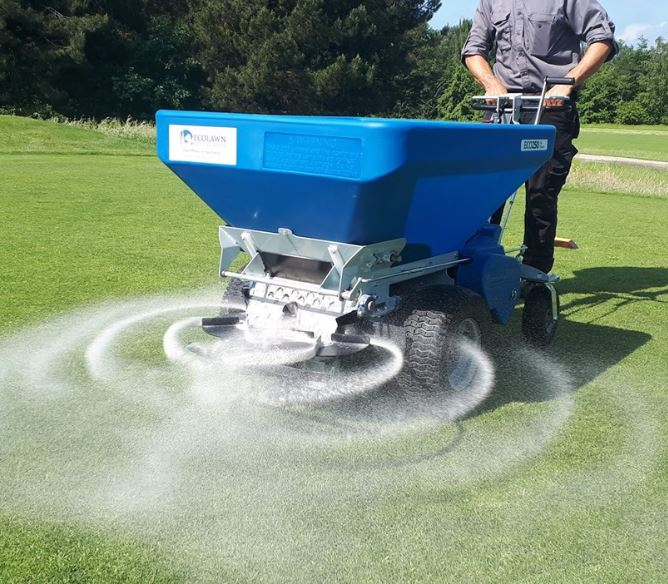
- You can use the fertilizer spreader to apply seed, lime, pesticide, fertilizers and other granular materials.
- Rotary spreaders are used to distribute the material in a swath making it useful in large areas
- Rotary spreaders broadcast material by centrifugal force
- Some spreaders can be pulled with a garden tractor
- Regardless of the models, basic spreaders are very similar
- Tow behind spreaders have a larger capacity and can be used on large pieces of land
- Walk behind spreaders are useful for smaller lawns
Types of Loan Fertilizer Spreaders
The Broadcast Spreaders
They are used for lawn spreads over relatively large areas. Commonly known as the rotary spreader because of the rotating disc it uses, you can use it to evenly distribute fertilizer throughout your lawn. It helps spread the fertilizer on the lawn with a spinning motion.
During the fertilizer distribution process, the fertilizer falls on the disc then it is evenly distributed across the loan. You have the ability to control the flow of the fertilizer spread through the machine to the lawn.
Drop Spreaders
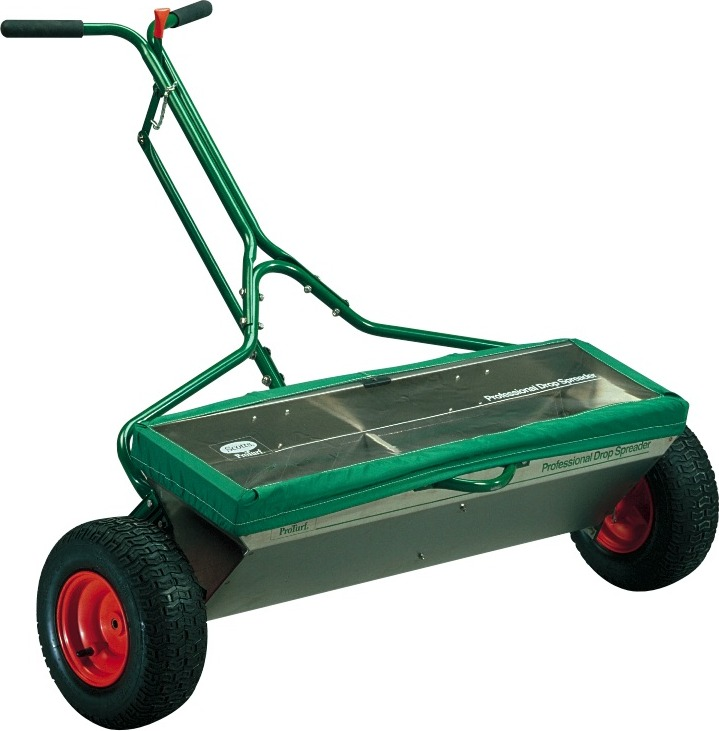
They are for more accurate distribution of fertilizers across your lawn. The problem is, you can only use it on a small lawn or garden, preferably close to 500 square feet.
It has a bucket-like container to hold the fertilizer and wheels to allow you to move it around the garden easily.
One great advantage of spreaders made with this design is that you can move them around in the tight corners of the garden and other awkward positions very easily.
They are inexpensive when compared to the other models. There is no wasting fertilizer with this fertilizer spreader.
The Tow Behind Broadcast Spreaders
Depending on the make, you could hold up to 80 pounds of fertilizer with this one. You can also attach it behind a lawn tractor making lawn work easier for you.
It works with a mechanism that allows it to control the application rate. The width of the path for spreading fertilizer is between 12 and 10 feet. This allows the machine to cover close 1to 25,000 square feet in just one round. You do not have to repeatedly fill the spreader and cover multiple trips to complete the process.
The Centrifugal Spreader
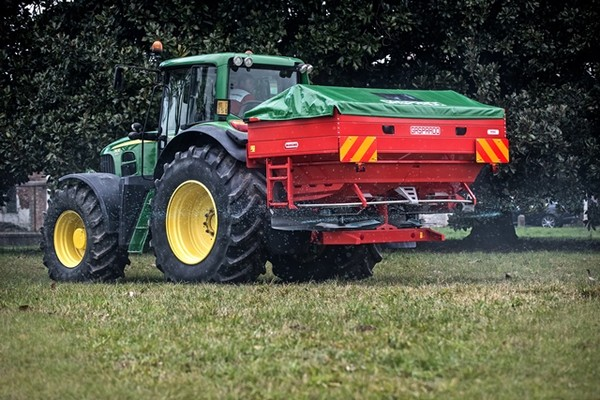
They are eerily similar to the drop spreaders, except for one thing; the centrifugal spreaders cover more area than all the previous mentioned spreaders combined.
The path for spreading the fertilizer is also wider as compared to the others. The centrifugal is considered to be great for its ability to cover large distances. However, it is very difficult to keep one steady while spreading fertilizer.
Most centrifugal spreaders come installed with deflectors making it easy to use along sidewalks and flowerbeds.
Aerator Spreaders
This multifunctional tool combines the functionality of the aerator and the spreader. It possesses tines that help penetrate the soil surface for close to 2 inches deep. This is the perfect debt for placing nutrients for the plants in your lawn or garden.
It applies the fertilizer in a 40-inch wide path meaning it can cover very large lawns and home gardens. The downside is that assembling this piece of machine can be very tedious. It holds around 100 pounds of fertilizer so you do not have to refill when fertilizing larger lawns.
Calibration and Use of Fertilizer Spreaders
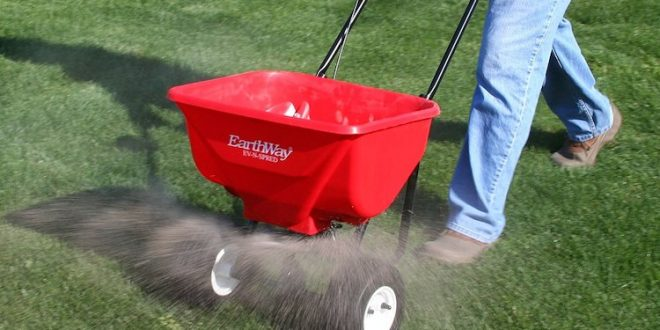
Knowing the ins and outs of a machine before you start using it is a pretty important step in my gardening book. You can find the calibration of a specific spreader on the website of the manufacturer or online stores where they sell it.
Every manufacturer has a way of calibrating their machines, which is why it is important to adjust them to the right conditions before using them.
Using a Fertilizer Spreader – Important Steps
When using any lawn fertilizers, you should cover the peripheral of your garden first. The internal part of the garden is fertilized when you push the spreader back and forth in a systematic way. This way, you get to cover the entire section of the garden. Use fertilizers that are not harmful to your pets if they happen to consume them by accident.
Now that you have established the different type of fertilizer spreaders, you know what to consider when purchasing one you need to understand how to use them depending on several factors. The technical skills, type of fertilizer and soil type will determine your use for this machine.
The general guidelines that come with using the fertilizer spreader include;
The first step is to always calibrate the spreaders according to the specifications by the manufacturer. Follow the exact distribution pattern and rate as indicated on the product packaging.
Precautions
- Fertilizer products are very corrosive; make sure you have on proper body, hand and eye protection when you are operating the fertilizer spreader.
- Load your spreader on the driveway or sidewalk
- Move at a steady speed while using the spreader
- When you stop or make turns, close the opening on the spreader
- The broadcast spreader can get a better coverage if you use a crisscross pattern during the application or distribution of product.
- At first, reduce application setting and make passes over the lawn then make a pass over the perpendicular to the first pass
- Once you are done, sweep off the materials from the driveway and sidewalk surfaces and apply it on the lawn.
How to Get the Perfect Fertilizer Spreader
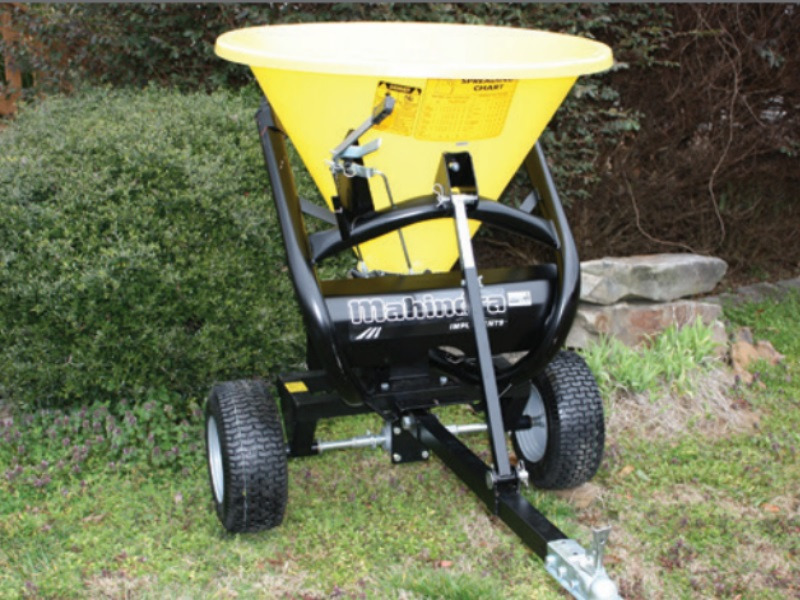
What Makes a Good Spreader?
Now that you know what categories to choose from, you will need to know what features make a good spreader. Other factors that will affect the decision you make include lifespan, quality, price and the size of your garden/yard.
In general, the price and durability/ lifespan are two of the most important factors after the type. Always keep them in mind when you are purchasing a spreader. Prices for most spreaders lie within the same range unless a machine has more special features.
Durability will differ depending on usage levels; spreaders should last you a really long time unless you fail to maintain yours. You do not need an excessively large spreader when you own a small piece of land. If you have a large piece of land, go for spreaders that will shoot the fertilizers to long ranges and save you some time and money.
Both plastic and steel/meta spreaders can last you a long time depending on the density and exact type of material. Steel spreaders have the advantage of precision while plastic ones are easy to clean, maintain and last you longer.
How to Clean, Maintain and Store Your Fertilizer Spreader

Farm equipment industry has a huge variety of trailed types and three point mounted fertilizer spreaders. Most brands either have double or a single spreading disc that delivers the fertilizers on the field.
Proper storage and maintenance are important no matter the style and brand of fertilizer spreader. It ensures you get an accurate and trouble-free spreader performance.
Cleaning and storage help you prolong the life of the machine and also ensures accurate and precise spreading every time.
Basics steps for cleaning fertilizer spreaders include
- Put your gloves on
- Make sure you empty the fertilizer spreader and remove any remaining product
- Remove fertilizer residue and granules from the spreading components and the hoper. You can use high-pressure air from an approved nozzle
- Wash the spreader thoroughly making sure water does not move to the components of the spreader hat are electrical or have wiring.
- For storage, ensure you keep in a clean and dry location out of reach of the sun.
Maintenance
Before you head out to the field with your spreader, do a full-on inspection to ensure is mechanically safe to operate
Confirm that all the components and safety guards are in good condition and in place. Check the load-bearing components and all the fasteners; ensure they are tight and in good working condition. Confirm that the spreading discs and related components are good. Lubricate the moving parts of the spreader once in a while
Final Word
If you have a garden/lawn, you will need to purchase a fertilizer spreader to make the job a little easier. Choosing the right fertilizer spreader is not easy; you have to go through countless products before you settle on the right one.



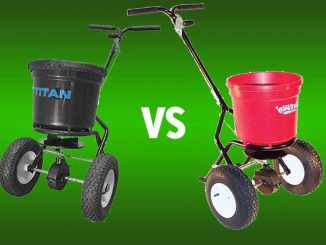
Be the first to comment